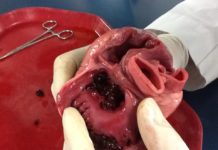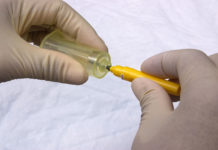
Dorsal root ganglion (DRG) stimulation provides long-term relief from chronic back pain
If you are suffering from chronic back pain and have tried numerous therapies, and want to get rid of the need of regular pain medications, then this new therapy should gladden you.
People with treatment-resistant back pain may get significant and lasting relief with dorsal root ganglion (DRG) stimulation therapy, suggests a study presented at the ANESTHESIOLOGY® 2018 annual meeting.
Chronic pain is defined as pain that lasts three months or more despite numerous treatments. DRG stimulation disrupts pain by specifically targeting the nerves responsible for the pain.
People in our study who had DRG stimulation reported significant improvement in pain even after a year, which is notable
“People in our study who had DRG stimulation reported significant improvement in pain even after a year, which is notable,” said Robert J. McCarthy, Pharm.D., lead author of the study and professor of anesthesiology at Rush University Medical Center, Chicago. “They had tried numerous therapies, from drugs to spinal cord stimulation to surgery, but got little to no lasting pain relief. For most, DRG stimulation really improved their quality of life.”
DRG are a cluster of nerve cells located on both sides of each vertebra that serves as the pain and sensation gateway between nerves in different parts of the body and the spinal cord and brain. DRG stimulation therapy interrupts the pain signal between the painful area and the brain. A pacemaker-like device implanted under the skin in the lower back sends small electronic pulses through a wire placed near the DRG that is connected to the nerve associated with the pain. The device is programmed by an anesthesiologist or other pain specialist based on the patient’s pain.
In this study, researchers implanted DRG stimulation devices in 67 people with chronic back pain. Patients were followed for 3 to 18 months. Seventeen patients had the device for more than a year.
The study found that pain score fell from 8-10 to 5, a clinically significant improvement when compared to pre-device placement pain (with 10 being the worst pain imaginable). Patients reported a 27 percent decrease (median) in disability, or patient-reported limitations to daily living, due to pain. About 94 percent of patients reported the treatment was beneficial.
DRG stimulation differs from spinal cord stimulation as it avoids unnecessary stimulation of nerve fibers that come from non-painful areas and it also requires lower levels of current compared to spinal cord stimulation.













[…] New device provides long-term relief from chronic back pain Medibulletin […]
Comments are closed.